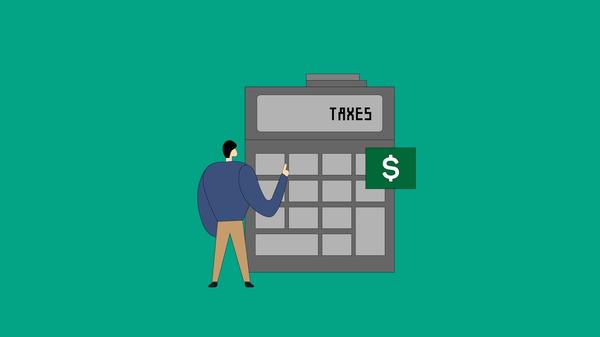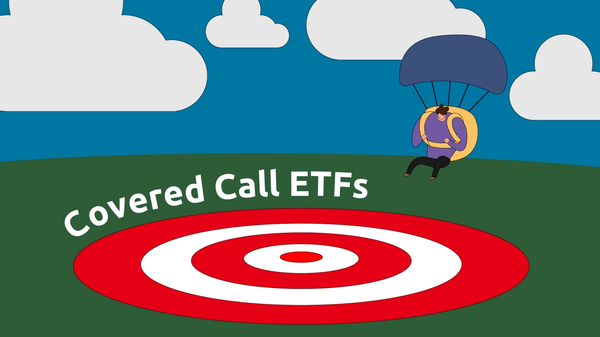So you’re interested in becoming a passive investor? Well look no further, you’re in the right place. This article will help you get started in 5 simple steps. Before we get started with investing, you should have learned how to prioritize your money and cleared all of your high-interest debt, such as your credit card and student loan debts. The interest on these is a lot higher than the returns you’ll make with your passive investments. Also, the money you are investing will go solely towards your retirement nest egg, so you shouldn’t be investing with money that you will need in ten years or sooner.
Finally, this guide assumes that you will be investing in low-cost Exchange Traded Funds (ETFs). As discussed in our Primer on Passive Investing article, passive investing is all about minimizing fees, staying diversified and being in it for the long haul with the expectation of getting the market returns. Remember, 80-90% of active managers do not beat the market’s returns. With that said, let’s begin:
Step 1: Develop a plan based on how much you can afford to invest.
Let’s say you intend on retiring at the age of 65, under the assumption that you will live to the ripe young age of 100. After all, we have made great strides in healthcare and medicine and it is not unreasonable to expect to be around a bit longer. According to MoneySense, the typical middle-class couple can live comfortably on $42,000 to $72,000 a year, assuming no mortgage or child cost. That equates to between $1,470,000 and $2,520,000 over the course of 35 years.
Who wouldn’t want to have a nest egg valued at over $1,000,000? But the reality is, the amount of money you can afford to invest is determined by what your monthly expenses are. Before investing, you should pay off your monthly expenses, then determine how much of your disposable income can be allocated towards retirement. Don’t forget to take your lifestyle into account. Depending on your lifestyle, you may decide to scale back spending in order to save more towards retirement. The main point of this step is to have a plan that works for you. The truth is, there is no perfect plan and the fact that you have one is a good start. The right time to start investing for retirement is now.
Step 2: Determine your asset allocation
Consider asset allocation as the process of “splitting up your investments” into various asset types in order to find the right balance between potential returns and safety. When investing, there are 3 main asset types to consider: stocks, bonds and cash (or cash equivalents). Depending on your tolerance for risk, you may decide to hold more or less of a particular asset type. For the purpose of this guide, we will assume that you are only holding stocks and bonds because you are trying to build wealth. That being said, it is not uncommon to hold some cash, though you should understand that inflation will slowly but surely deplete the value of your dollars over the years.
When determining your asset allocation, a common rule of thumb is to hold your age in bonds and the rest in stocks. For example, if you are 40 years old, you may choose to have a 40% weighting in bonds and 60% weighting in stocks under this rule of thumb. Others will suggest you further subtract 10 from your age to determine your bond allocation, but it is ultimately up to you and your goals. Once you’ve determined your stock allocation, you can refine this further by selecting ETFs that give you exposure to a variety of markets such as Canadian, US, and international.
For example, your 60% stock allocation could be further split up into: - 20% Canadian Equities - 20% US Equities - 20% International Equities …or any other proportion you choose!
When it comes to bonds, the Canadian Couch Potato blog recommends holding Canadian bonds as opposed to International bonds because of the currency risks. In keeping with our scenario above, the remaining 40% of your portfolio’s allocation could be held in an index fund or ETF that tracks the entire Canadian bond market. When determining your asset allocation, always remember to stay diversified. This online questionnaire from Vanguard may be helpful for determining your asset allocation. If you’re still feeling unsure, then speak with a registered fee-only financial planner who supports DIY investors and let them know that you’re interested in ETFs.
Step 3: Open an account with a discount brokerage and build your portfolio
According to Young and Thrifty’s comparison of online brokers in Canada there are a few factors that you should consider when selecting a discount brokerage, these are:
- Free ETFs trades
- Low account fees
- Low trading fees
- Low account minimums
- Good customer service
- Reimbursed transfer fees
- Safety
- Compatibility with Cell Phones
For any passive investor, using a discount brokerage is a must! Why? Because you want to minimize fees as much as possible. Questrade is a great choice for Canadians because of their commission-free ETF purchases and low account fees. They may also pay the transfer fee your old brokerage charges when you move funds over to Questrade. You can use the promo code bgudhqhm to get $50 in free trades with Questrade.
As a first time investor, building a portfolio can be quite intimidating, especially if you are using your brokerage account for the very first time. Have no fear, Justin Bender’s Canadian Portfolio Manager blog has a series of video tutorials on how you can build ETF portfolios with Canada’s leading discount brokerages.
Step 4: Stay the course and avoid speculation
So you’ve built a diversified ETF portfolio, now here comes the hard part: staying the course and avoiding speculation! It’s easy to be tempted to sell your investments when the markets are doing poorly. Keep in mind that, even if the market is doing poorly, it does not mean that you have lost money. The losses are only incurred if you sell a security for less than what you paid for it.
Remind yourself that over the long term the market has always gone up. If you were to Google the market indexes of the New York Stock Exchange, NASDAQ, S&P 500 (an index that tracks the 500 largest corporations in America) and Morgan Stanley Capital International (MSCI) world index you will observe one thing. That is, these indexes historically trend upward over a long period of time, even after global recessions.
But don’t just take my word for it. According to Investopedia:
Between 1928 and 2013, a broad index of U.S. stocks increased 2,000-fold. However, 20 times they actually lost at least 20% of their value in that period.
With this knowledge in mind, I’d like to share two rules that Warren Buffet — the world’s most successful investor — lives by:
Rule #1: Don’t Lose Money.
Rule #2: Never Forget Rule #1.
Another aspect of staying the course is contributing regularly. The best way to do this is to set up automatic payments to your brokerage account and make regular purchases. This reduces the likelihood of you spending the money before having the opportunity to invest it. Consider this as “paying yourself first”, which can go a long way towards establishing a comfortable nest egg.
Step 5: Rebalance your portfolio when needed
As time passes, your portfolio will drift from its initial asset allocation because of the variance in performance between the assets in your portfolio. Because of this, rebalancing will need to be done in order to bring your portfolio back into alignment with the target allocation. There is no set rule of thumb as to how often you should rebalance. Some investors rebalance based on a calendar schedule (monthly, quarterly, annually), whereas others opt to rebalance whenever their assets have grown in value beyond a certain threshold (for example, 5% or 10% out of target). Because you’re focusing on building wealth and contributing on a regular basis, you could rebalance by simply purchasing the underweight asset(s) in your portfolio. If you’ve signed up with a discount brokerage that offers free ETF purchases, this method would not incur any fees and would help to keep your portfolio balanced.
Most importantly, be sure to remember the rule of thumb in step #2. As you get closer to retirement, revisit your allocation and adjust it for your time horizon and risk tolerance.


